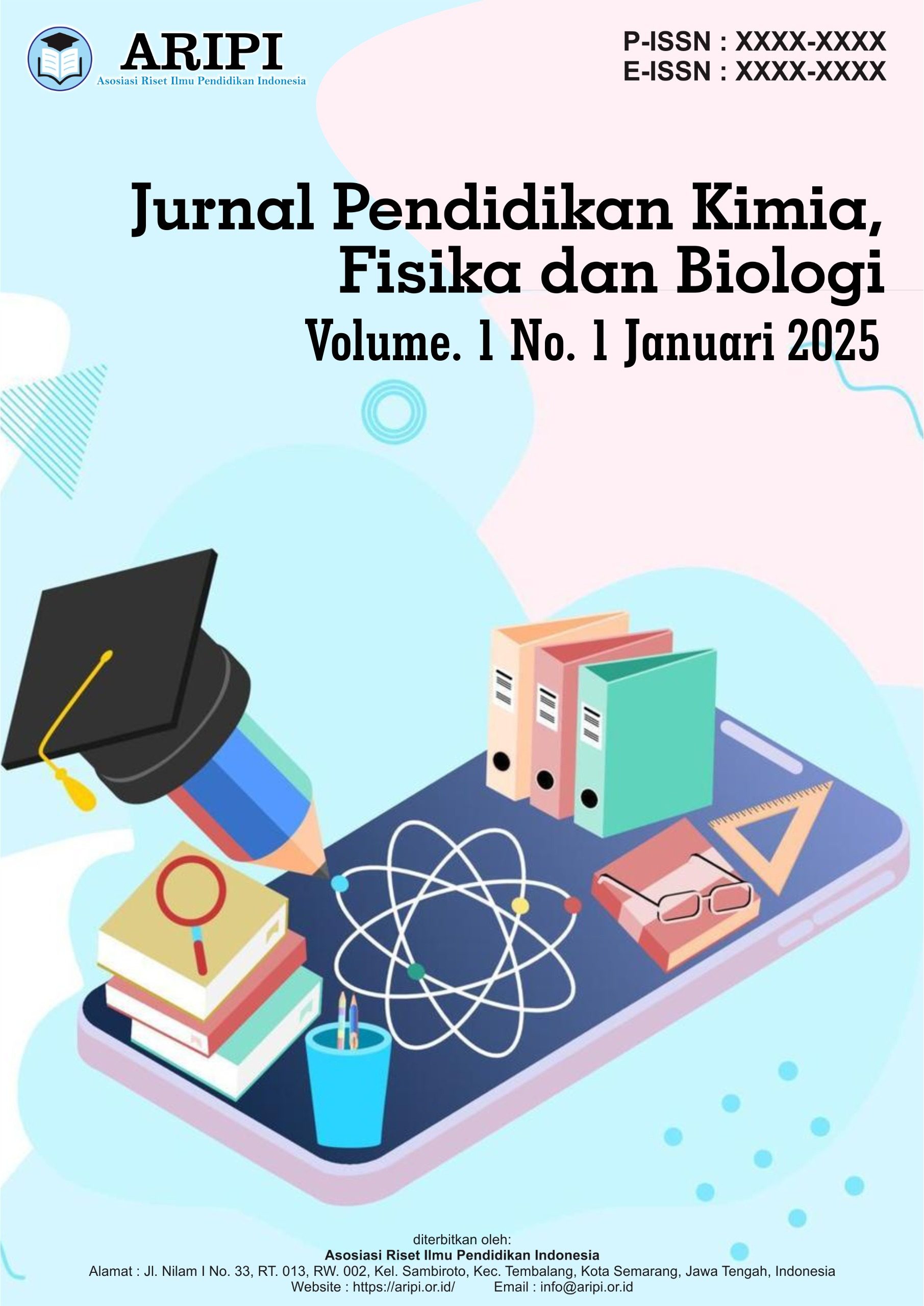Efektivitas Media Augmented Reality dalam Pembelajaran Struktur Atom di Sekolah Menengah
DOI:
https://doi.org/10.61132/jupenkifb.v1i1.166Keywords:
Augmented Reality, atomic structure, chemical education, educational technology, concept understandingAbstract
This study aims to examine the effectiveness of Augmented Reality (AR) media in improving students' understanding of atomic structure. The background of this study is based on the importance of innovation in chemistry learning to improve students' engagement and understanding of concepts. The method used is an experiment with a pretest-posttest design, where students are divided into control and experimental groups. The results showed that the use of AR significantly improved students' understanding compared to conventional methods. These findings indicate that AR technology can be an effective tool in chemistry education to strengthen abstract concepts. The implications of this study indicate the need for technology integration in the learning process to improve the quality of science education.
References
Anderson, L. W., & Krathwohl, D. R. (2001). A taxonomy for learning, teaching, and assessing: A revision of Bloom’s taxonomy of educational objectives. Longman.
Azuma, R. T. (1997). A survey of augmented reality. Presence: Teleoperators & Virtual Environments, 6(4), 355-385.
Bacca, J., Baldiris, S., Fabregat, R., Graf, S., & Kinshuk. (2014). Augmented reality trends in education: A systematic review of research and applications. Educational Technology & Society, 17(4), 133-149.
Billinghurst, M., & Duenser, A. (2012). Augmented reality in the classroom. Computer, 45(7), 56-63.
Billinghurst, M., Clark, A., & Lee, G. (2015). A survey of augmented reality. Foundations and Trends in Human–Computer Interaction, 8(2-3), 73-272.
Bogdan, R. C., & Biklen, S. K. (2007). Qualitative research for education: An introduction to theories and methods. Pearson.
Chen, C. M., Su, C. Y., & Chen, Y. Y. (2020). Developing an augmented reality-based learning system for improving the learning effectiveness of chemistry students. Interactive Learning Environments, 28(5), 602-615.
Chen, P., Liu, X., Cheng, W., & Huang, R. (2017). A review of using augmented reality in education from 2011 to 2016. Innovations in Smart Learning, 13-18.
Chiu, J. L., DeJaegher, C. J., & Chao, J. (2015). The effects of augmented reality on science learning: A meta-analysis. Educational Research Review, 16, 1-18.
Cohen, L., Manion, L., & Morrison, K. (2018). Research methods in education (8th ed.). Routledge.
Creswell, J. W. (2014). Research design: Qualitative, quantitative, and mixed methods approaches (4th ed.). SAGE Publications.
Dunleavy, M., Dede, C., & Mitchell, R. (2009). Affordances and limitations of immersive participatory augmented reality simulations for teaching and learning. Journal of Science Education and Technology, 18(1), 7-22.
Field, A. (2013). Discovering statistics using IBM SPSS statistics. SAGE.
Fraenkel, J. R., & Wallen, N. E. (2012). How to design and evaluate research in education (8th ed.). McGraw-Hill.
Gay, L. R., Mills, G. E., & Airasian, P. (2012). Educational research: Competencies for analysis and applications (10th ed.). Pearson.
Ibáñez, M. B., & Delgado-Kloos, C. (2018). Augmented reality for STEM learning: A systematic review. Computers & Education, 123, 109-123.
Ibáñez, M. B., Di Serio, Á., Villarán, D., & Delgado-Kloos, C. (2014). Experimenting with electromagnetism using augmented reality: Impact on flow student experience and educational effectiveness. Computers & Education, 71, 1-13.
Klopfer, E., & Squire, K. (2008). Environmental detectives—The development of an augmented reality platform for environmental simulations. Educational Technology Research and Development, 56(2), 203-228.
Kounavis, C. D., Kasimati, A. E., & Zamani, E. D. (2012). Enhancing the tourism experience through mobile augmented reality: Challenges and prospects. International Journal of Engineering Business Management, 4, 10.
Liarokapis, F., & Anderson, E. F. (2010). Using augmented reality interfaces to enhance teaching experiences. In The 2010 ACM SIGGRAPH Symposium on Interactive 3D Graphics and Games (pp. 19-26).
Mertens, D. M. (2019). Research and evaluation in education and psychology: Integrating diversity with quantitative, qualitative, and mixed methods. SAGE Publications.
Piaget, J. (1950). The psychology of intelligence. Routledge & Kegan Paul.
Radu, I. (2014). Augmented reality in education: A meta-review and cross-media analysis. Personal and Ubiquitous Computing, 18(6), 1533-1543.
Shelton, B. E., & Hedley, N. R. (2002). Using augmented reality for teaching Earth-Sun relationships to undergraduate geography students. The First IEEE International Augmented Reality Toolkit Workshop.
Wojciechowski, R., & Cellary, W. (2013). Evaluation of learners' attitude toward learning in ARIES augmented reality environments. Computers & Education, 68, 570-585.
Wu, H. K., Lee, S. W. Y., Chang, H. Y., & Liang, J. C. (2013). Current status, opportunities, and challenges of augmented reality in education. Computers & Education, 62, 41-49.
Yuen, S. C. Y., Yaoyuneyong, G., & Johnson, E. (2011). Augmented reality: An overview and five directions for AR in education. Journal of Educational Technology Development and Exchange (JETDE), 4(1), 119-140.





